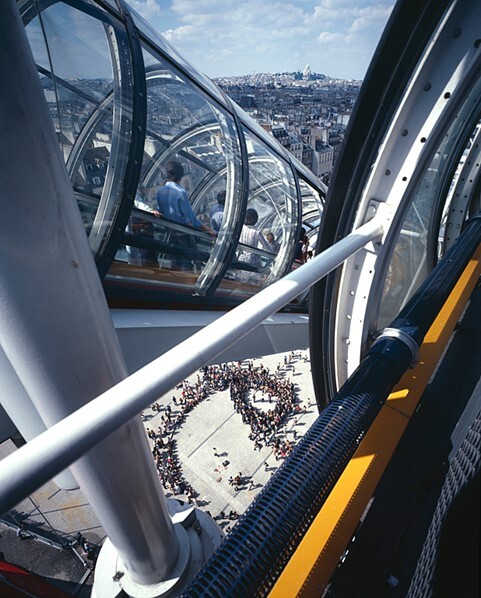
The Pompidou Centre has outlived colour film
Image: Richard Einzig's iconic image of the radical exterior escalators at the Pompidou Centre in the context of Paris 1978
The Pompidou Centre is closing for five years (an optimistic assessment?) for refurbishment, writes Lynne Bryant. Like a high-performance car, it will need to be stripped down to its chassis and rebuilt.
After almost fifty years, for many it has always been there, as an integral part of the Parisian landscape. Curves may have superseded angles in 'grande project'; nevertheless, the Pompidou remains authentically modern.
When, in 1971, emerging architects Richard Rogers and Renzo Piano planned their submission for the competition of Centre Beaubourg (later Centre Pompidou) they were convinced they had no hope of winning and worked outside of convention. Their ideas were radical: the building would be an urban machine. To achieve the largest, clearest and most flexible interior spaces for exhibitions and events, the services would be on the outside - and visible.
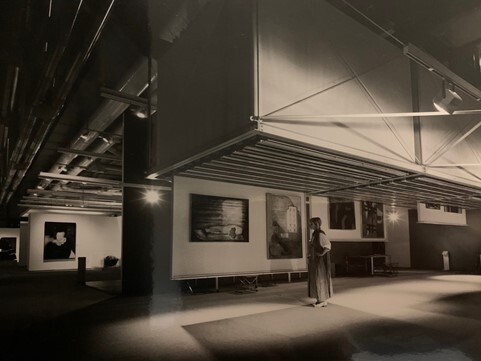
Flexibility first. Huge rectangular floors could be the size of two football pitches, free from columns, permanent partitions, or interruptions.
Four bold colours - blue, red, yellow and green, chosen for the facades, would outline its structure according to a colour code devised by the architects.
Blue for air flows (air conditioning).
Yellow for electricity.
Green for water circuits.
Red for pedestrian flow (escalators and lifts).
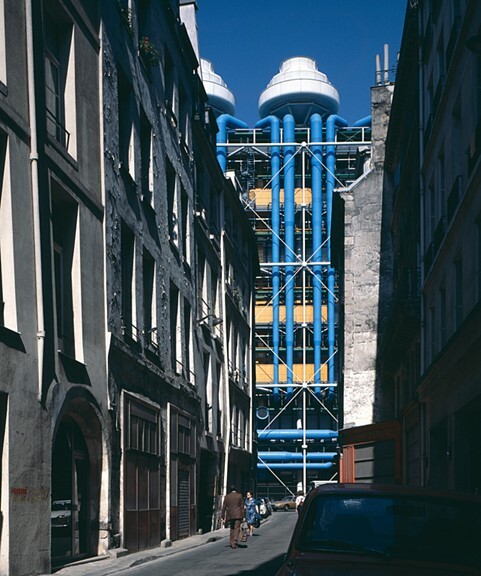
Dominant blue air conditioning pipework, smaller and behind are the green pipes for water circulation.
Colour was an essential part of the design but at the time black and white photography dominated. It is difficult to believe that it wasn't until the end of the 1970s that colour photography began to appear in the UK architectural press.
Colour was expensive to print and initially the rare colour pages were sponsored.
Richard Einzig (1932 - 80) was the UK's leading architectural photographer and, together with his US contemporaries, he began the transition from black and white to colour via colour negative. Further change came for Einzig when he was commissioned by the magazine Architectural Design to photograph Pompidou. The majority of the images were black and white;
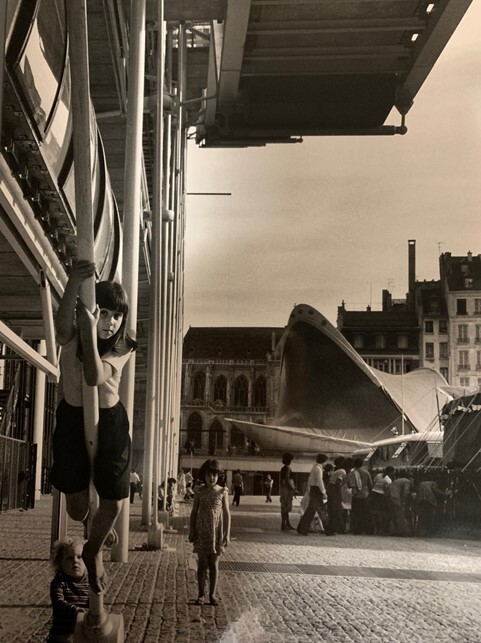
In this built-up area of Paris the vast Piazza created a space to meet, relax and play.
only five or six were colour and this time they were colour transparency.
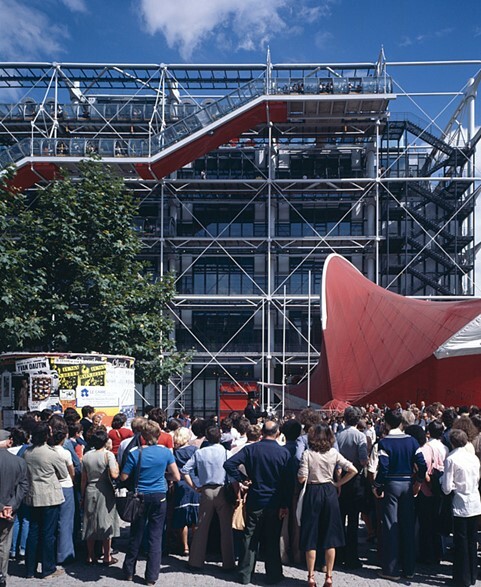
People gather around an event in the newly formed Piazza.
The colour was reserved for a few key exteriors and Einzig's images were seen in other publications around the world.
Colour film was short-lived as photography transitioned to digital. The Pompidou Centre has already outlived colour film for over twenty years.
Musings from my life in photography and architecture ©Lynne Bryant
All photographs ©Richard Einzig/arcaidimages.com
They may not be downloaded, scraped or copied in anyway
Founder Partner






